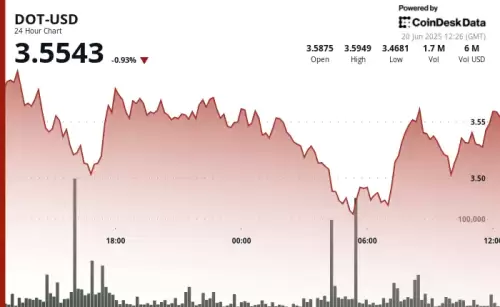 |
|
 |
|
 |
|
 |
|
 |
|
 |
|
 |
|
 |
|
 |
|
 |
|
 |
|
 |
|
 |
|
 |
|
 |
|
Cryptocurrency News Articles
Cracking the Cross-Chain Code: Interoperability and Web3 UX
Jun 20, 2025 at 05:18 pm
Web3's fragmented landscape is a UX nightmare. But, innovations in cross-chain tech are paving the way for a user-friendly future. Let's dive in!

Web3 promised a decentralized utopia, but delivered a fragmented mess. Cross-chain interoperability isn't just a tech upgrade; it's the foundation for Web3's mainstream future.
The Web3 Fragmentation Fiasco
Right now, Web3 feels like navigating a maze. You need a different wallet for every chain, each with its own rules and tokens. Imagine holding Bitcoin in a hardware wallet, trading Ethereum tokens on MetaMask, and staking Cardano via Lace Wallet. Each step requires manual bridging, fee calculations, and constant security checks. It’s not just inconvenient; it's a systemic failure.
Even addresses are a headache! Ethereum uses hexadecimal, Bitcoin uses Base58, and newer chains invent their own. Galaxy researchers call this "asset fragmentation," where tokens bridged across chains become non-fungible and confusing. It's like the Tower of Babel, where chains can barely talk to each other.
Transaction Fees: The Silent UX Killer
Cross-chain transactions come with a hidden tax: fees. You pay on the source chain, the destination chain, and for relay services. If you're not careful, fees can eat up the value of your transfer. ERC-20 swaps on Ethereum can hit $10 during peak times, and even layer-2 bridging adds complexity.
Solutions like Arbitrum and Optimism offer some relief, cutting fees by up to 95%. But Solana's co-founder points out that they also add fragmentation. Bridging USDC from Arbitrum to Polygon still means dealing with different architectures and completion times. True interoperability needs to abstract these complexities, not just optimize them.
Towards a Chain-Agnostic Nirvana
The real goal isn't just cross-chain transactions, but chain-agnostic ones. Users should access DeFi pools, NFT markets, and DAOs through unified interfaces. Imagine a wallet that picks the cheapest chain for swaps, routes transactions over optimal bridges, and consolidates fees into one stablecoin payment, all while keeping your assets secure.
This requires innovations like DeFAI. If interchain transactions were seamless, AI agents could handle most DeFi transactions. We're not there yet, but it's the vision.
Smart contracts should run cross-chain without wrappers, and decentralized identities should move frictionlessly between ecosystems. We need super wallets that unlock the full potential of Web3.
Security: The Non-Negotiable Pillar
Interoperability can't come at the cost of security. Cross-chain bridges are prime targets, with over $2 billion stolen in 2023 alone. Centralized validators and opaque code are a no-go. New cryptographic tools, like zero-knowledge proofs, can verify cross-chain events without trusted middlemen.
The industry needs high security standards. We need collaborative initiatives, like the Linux Foundation’s Decentralized Trust, to create those standards. Developers must prioritize interoperability in base protocols, not as an afterthought. Users need to demand it from wallet and dApp providers.
Polkadot: A Layer 0 Solution
Polkadot, launched in May 2020, is a layer 0 blockchain aiming to create an "internet of blockchains." It uses a multi-chain architecture with specialized blockchains called parachains that function in parallel while benefiting from the shared security of the Relay Chain.
The DOT token is central to Polkadot, used for governance, staking, bonding, and transaction fees. This design allows blockchains to specialize while staying connected, overcoming scalability and interoperability limitations.
The Bottom Line
Blockchains need interconnection. Just like TCP/IP unified computer networks, interoperability protocols can weave isolated Web3 chains into a cohesive digital economy. The blueprints exist; what we need now is collective will.
We need to stop building isolated kingdoms and start laying the railroads between them. Only then will Web3 become user-friendly and fulfill its promise. Interoperate or stagnate, folks!
Disclaimer:info@kdj.com
The information provided is not trading advice. kdj.com does not assume any responsibility for any investments made based on the information provided in this article. Cryptocurrencies are highly volatile and it is highly recommended that you invest with caution after thorough research!
If you believe that the content used on this website infringes your copyright, please contact us immediately (info@kdj.com) and we will delete it promptly.






























































